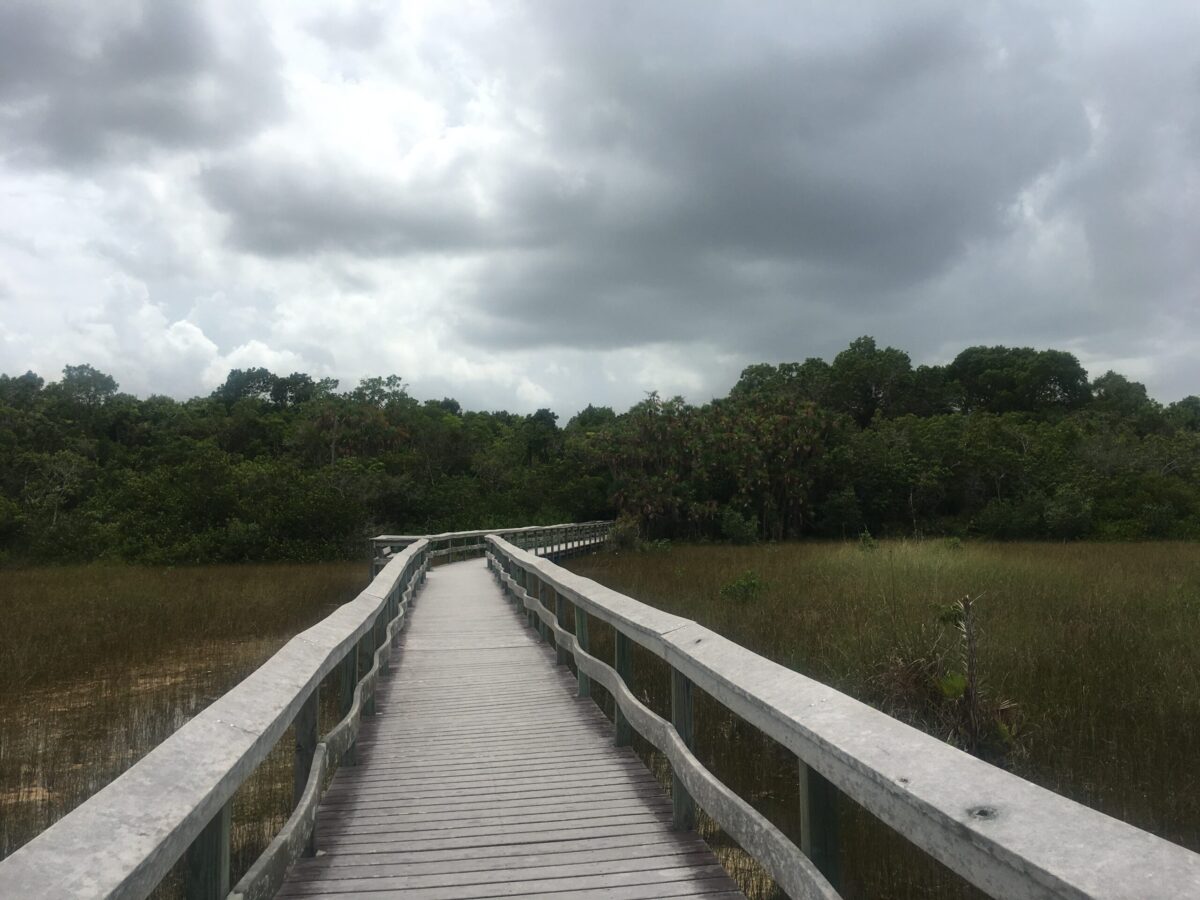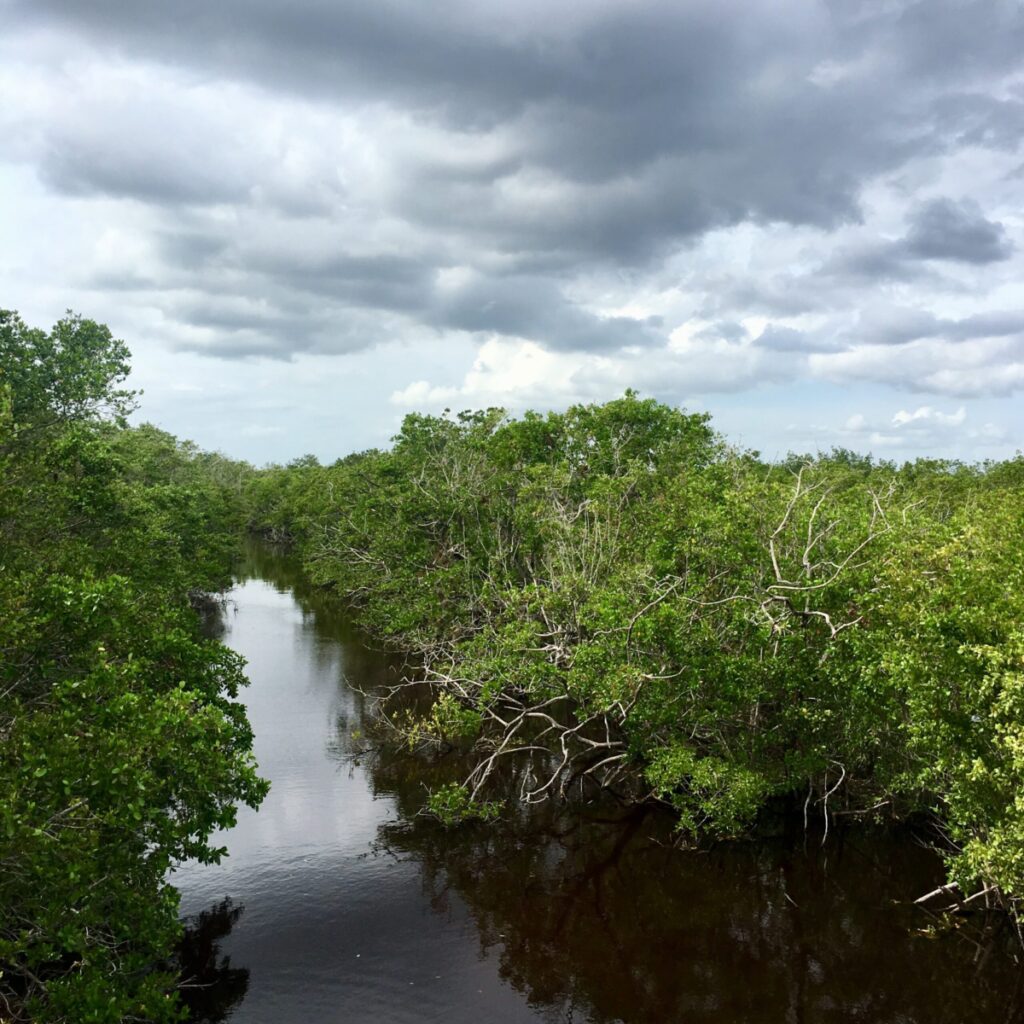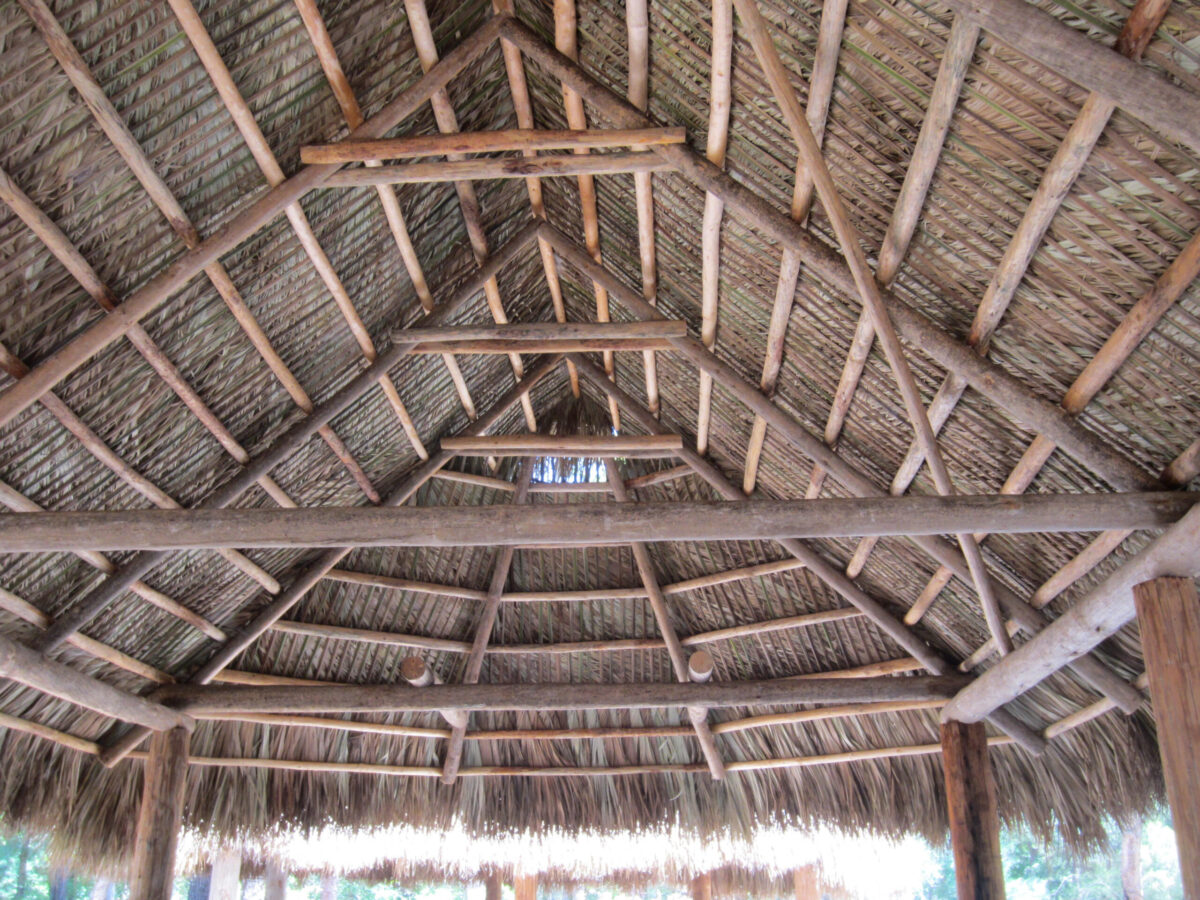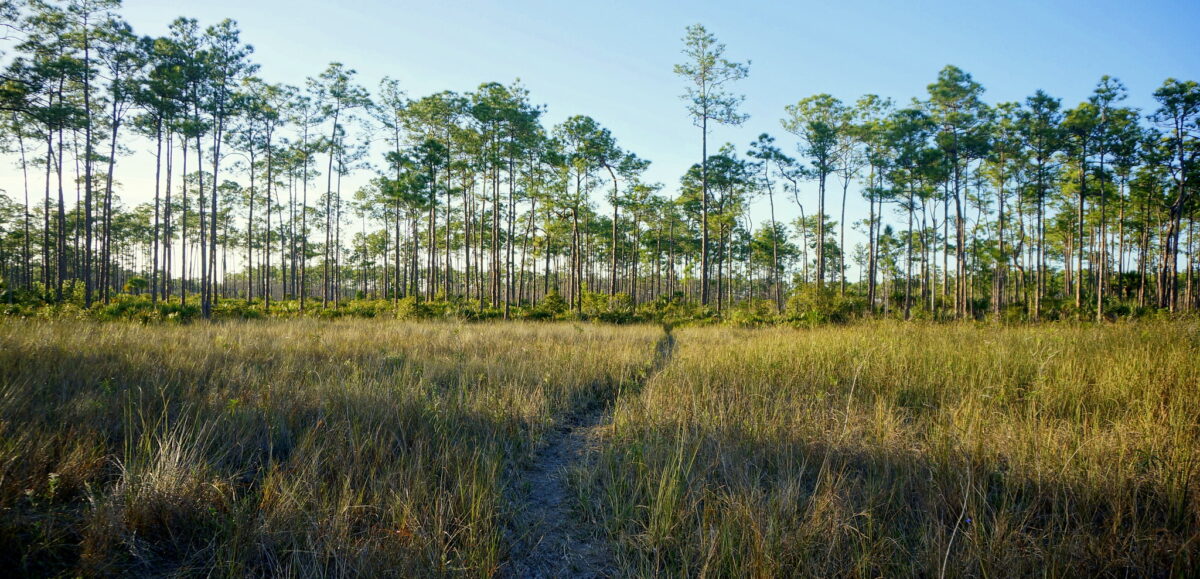
Welcome to Florida’s Wet Season!
Wet season in Florida brings many changes, most notably – hurricanes! Are you visiting Florida any time this summer? Hurricane season started this week on June 1st. Today, we are talking about everything YOU need to know about traveling in Florida during this season. This week, follow along for a comprehensive rundown of wet season in Florida. From shifts in weather, animals and plants you may spot, and tips and tricks, this post includes information for every Florida traveler.
Weather Changes

Storm Clouds at J.N. Ding Darling National Wildlife Refuge, Oct 2017
Florida in the summer is not for the faint of heart. If you visit Florida during hurricane season, being prepared is the best way to have an enjoyable (and fun!) vacation. In the Clewiston area, close to the Ah-Tah-Thi-Ki Museum, average high temperatures top 90 degrees Fahrenheit from June through September. Rainfall also significantly increases during the summer months. Precipitation in the Clewiston area averages between 6 and 7 inches from June to August. The high temperatures and rainfall create a very humid climate! If you aren’t used to that sort of weather, it can be a harsh adjustment.
Summer rainfall significantly impacts water levels throughout the state. Canals, fields, rivers, and springs swell with water. Since Florida is relatively flat, all this extra water affects the landscape. Areas completely dry in December become waterlogged in July and August.
One type of landscape feature that rises in importance during wet season is tree islands. We have discussed tree islands here in a previous blog post. Tree islands, or hammocks, have a slightly higher elevation than the surrounding land. They provide shelter to many plants and animals during the wet season when the water level rises. Even a few feet of water makes a significant difference in the landscape. When the rest of the land is under a few feet of water, hammocks are high and dry. Seminoles would use hammocks for gardens and living spaces. Gardens were hidden from sight and protected from outsiders. In a previous post about Seminole foods, we discussed their importance during the Seminole war period. Seminoles would plant their gardens in one hammock and live in another. If US troops compromised one, the other would still be safe.
Hurricanes, Tropical Storms, and Tropical Depressions.
Weather-wise, wet season typically has warm, humid weather and lots of rainfall and thunderstorms. Often, daily afternoon rain showers and storms occur over the Florida peninsula. There is a greater chance of hurricanes developing during the wet season than during the winter. Hurricanes are tropical cyclones with defined air circulation and sustained winds of greater than 74 mph. Tropical storms are tropical cyclones with sustained winds of 39-74 mph. Tropical depressions have sustained winds below 39 mph. According to the National Oceanic and Atmospheric Administration (NOAA), an average of 12 tropical storms, 6 of which develop into hurricanes, form over the Atlantic Ocean, Caribbean Sea, or Gulf of Mexico during hurricane season. Generally, a hurricane watch is issued 48 hours before possible tropical storm force winds develop. August is considered the peak of storm season.
In addition to high wind speeds, these storms pose the threat of storm surge. Storm surge is the abnormal rise in sea level that accompanies a tropical cyclone. Since Florida is flat, storm surge can have a devastating effect. Storm surge can also travel inland, and swell rivers, estuaries, canals, and bays. Tropical storms also bring a lot of rainfall. So, flooding is a real danger to be aware of during this season, and can last for days after the storm has passed. If the hurricane does make landfall, tornadoes occur in rain bands far away from the center of the storm. Even if you are located away from the eye of the storm, be aware and stay inside until the storm has passed. For the most up-to-date information and graphics about possible storms, visit the National Hurricane Center’s website.

Mangroves on the East Coast, 2017
Plants and Animals
Just like the weather, plant and animal species shift during wet season. During the winter, there is less water in the landscape for animals to travel through. Alligators, snakes, fish, otters, and turtles use higher water levels in the summer to roam freely across the landscape. This also means they are more difficult to spot in their watery hiding places. Bears also become more active in summer as they hunt for food. In a previous blog post, we discussed how bird populations shift during the spring and summer months. Wading birds, warblers, kites, sparrows, and raptors are only a few of the stunning birds you might glimpse during the summer. As the weather becomes warmer, blooming nectar plants also attract healthy butterfly populations. You might see birds, snakes, alligators, and more during the summer along the Ah-Tah-Thi-Ki Museum Boardwalk.
Summer storms are also important for the health of the ecosystem. Although summer hurricanes can uproot trees, displace animals, and generally be destructive, they also play a significant role. Hurricanes help fertilize mangrove forests. Mangrove forests along the coast and into the Florida Everglades help protect coastline from erosion during storm events. In turn, these high energy storms deposit nutrients and minerals that help keep the forests healthy. These forests provide habitats for many plants and animals, most notably as nurseries for fish. Storms also break up algae blooms, and redistribute sand along beaches and barrier islands. The wet season also provides necessary water to the Florida landscape. Most of our average annual rainfall occurs during the short summer months. In Florida, water is at the heart of the ecosystem. Without it, the rich biodiversity seen in the Everglades would not be possible.
Tips and Tricks!
Be prepared
When packing for your Florida summer vacation, bring clothes and shoes for all weather. When you get ready for the day, pack salty snacks, water, sunscreen, and a raincoat. Florida is wet and humid in the summer, and you need to be prepared for every type of weather scenario. Double check the directions of places you’re visiting, so you don’t get lost. If you’re visiting the Ah-Tah-Thi-Ki Museum on the Big Cypress Seminole Indian Reservation, plan your trip to include gas and needed supplies. For some tips, directions, and essentials for visiting Big Cypress, check out a previous blog post here.
Check the Weather

Snake visible from the Ah-Tah-Thi-Ki Museum Boardwalk, Sept 2018
Weather in Florida is unpredictable. From day to day (even hour to hour!) rain, wind, sun, and humidity levels can change. Check the weather report, and especially the radar, for your trip each day. Before you begin traveling, check the 10-day weather report. Things can always change, but knowing if there are developing storms is important information. It allows you time to correct and adjust your travel plans.
Have a Plan
What happens if there is a big storm or hurricane during your trip? Do you have a plan? Being prepared and having a plan is the best way to enjoy your time in Florida. Check the cancellation policies with hotels, car rental companies, and airlines while booking your trip. See if there is flexibility in your reservations, and if you can shift them around in the event of inclement weather. Be sure to familiarize yourself with a possible evacuation plan, and bring additional medication or necessary supplies.
Be Flexible!
Just in case there is some inclement weather, be flexible with your plans. Research some indoor activities and wet weather options. If you plan to visit parks like the Everglades National Park, Big Cypress National Preserve, or other nature areas, be aware that services and programs may be canceled due to weather. Ranger led programs and tours are limited during wet season.
Summertime in Florida is fun and exciting. From the beach to the swamp, there are many activities to please even the pickiest traveler. But, with these sunnier days comes the possibility of more volatile weather. Don’t let it scare you! By being aware and prepared, you can enjoy the best summer in Florida.
Interested in visiting this summer? Here are some upcoming events and current exhibits at the Ah-Tah-Thi-Ki Museum on the Big Cypress Seminole Indian Reservation:
Home is Where the Heart Is, Exhibit Opening and Reception June 6th
Two Worlds: The Legacy of William Buffalo Tiger, Exhibit Open through August 22nd



